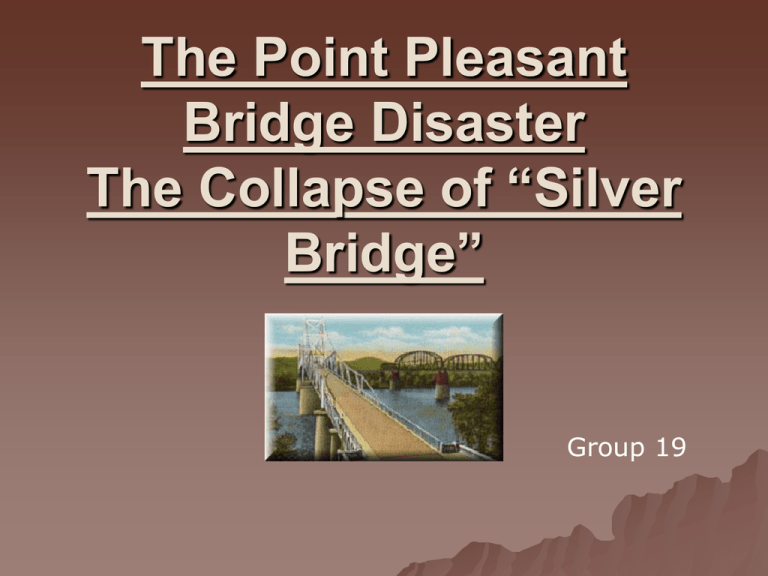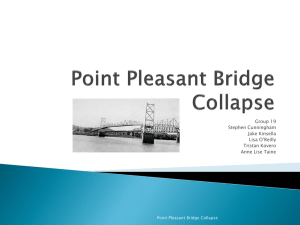The Point Pleasant Bridge Disaster.ppt
advertisement

The Point Pleasant Bridge Disaster The Collapse of “Silver Bridge” Group 19 Introduction Designed by American Society of Civil Engineers. Built by General Corporation and the American Bridge Company, 1928. Linked Point Pleasant, West Virginia and Kanauga, Ohio. 682m long, 6.7m wide Details of Bridge Revolutionary eye bar chain suspension bridge. High strength heat treated steel but only 2 bars in each link. Low redundancy chains: cost effective but safety dependant on accuracy of manufacture and materials The Towers 40m tall “rocker” towers. Towers not connected rigidly to the bases to allow the bridge to respond to live loads and deflections. Anchorage to bed rock too costly so a reinforced concrete trough filled with soil and reinforced concrete was used. The Collapse Collapsed on 15th December 1967 at 5pm after standing for 39 years. 46 killed, 9 injured Important bridge connecting West Virginia and Ohio completely destroyed. Wreckage Analysis Failure of entire bridge due to a defect in a single link in one eye bar. Fretting wear at the bearing caused a small crack to form which led to stress corrosion cracking. The lower side of the eye bar failed and all the load was transferred to the other side of the eye bar, which then failed by ductile overload. The south chain then snapped and the bridge collapsed. Causes of Collapse Bridge designed for loading of Ford Model T (680kg) in 1928, average car in 1967 weighed 1800kg. Traffic loads increased dramatically between 1928-1967. Technology then did not exist to detect minute cracks. Aftermath The collapse of the Silver Bridge led to increased maintenance and inspection of other older bridges. New inspection protocols were developed and many bridges were replaced. Thanks




